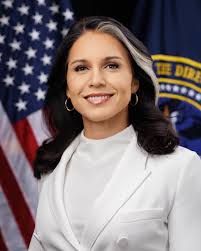Understanding Tulsi Gabbard’s Political Journey

Introduction
Tulsi Gabbard, a former U.S. Representative from Hawaii, has been a notable figure in American politics for several years. Serving in Congress from 2013 to 2021, Gabbard is known for her distinctive positions on foreign policy, military intervention, and social issues. Her rise in politics is particularly relevant today as discussions around leadership and diversity continue to swirl in the United States.
Political Career
Gabbard’s political journey began with her service in the Hawaii Army National Guard, where she deployed to Iraq. This military experience shaped her views on foreign policy, particularly her opposition to regime change wars, which she has articulated in various forums. Gabbard first gained national prominence during her campaign for the Democratic presidential nomination in 2020, advocating for issues such as healthcare reform, climate change, and a non-interventionist foreign policy.
Despite her progressive platform, Gabbard often attracted criticism for her polarising views, particularly regarding her meetings with controversial figures, including former President Bashar al-Assad of Syria. Her positions have often put her at odds with the Democratic establishment, leading to debates within the party regarding the direction and values of progressive politics.
Recent Developments
In late 2022, Gabbard made headlines when she announced her departure from the Democratic Party, citing concerns over the party’s divisiveness and its distance from the values she championed. Her exit was perceived by many as a move further toward an independent or conservative alignment, sparking conversations about the future of independent voices in American politics.
Additionally, Gabbard is active on social media and has developed a substantial following, where she discusses various topics, including national security, health policy, and American civil liberties. Her platform allows her to connect with citizens who are disillusioned with traditional party politics.
Conclusion
Tulsi Gabbard’s journey reflects broader trends in American politics, particularly the growing appetite for alternatives to the two-party system. As discussions around the reformation of political ideologies continue, Gabbard’s influence may shape a new generation of leaders. Her unique perspective on key issues invites voters to consider divergent views and approaches to governance. Whether her political career continues to evolve or she recedes from the spotlight remains to be seen, but one thing is clear: her impact on the political landscape is significant, and her voice will likely continue to resonate in future discussions.
